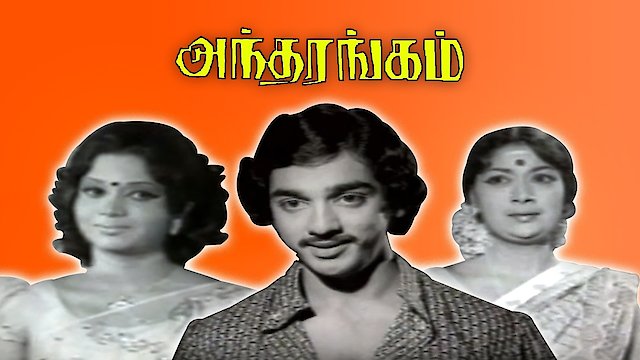
Antharangam
Where to Watch Antharangam

Antharangam is a 1975 Indian Malayalam film directed by the renowned filmmaker P. Bhaskaran, featuring the beloved actor Kamal Haasan, alongside Unni Mary and the venerable Savitri. Set against a backdrop rich with emotional complexities, the film delves into intricate relationships, societal norms, and the personal journey of discovering one’s identity.
Kamal Haasan, in his early career, showcases his remarkable acting prowess in Antharangam, where he plays a nuanced character that exhibits vulnerability, strength, and a longing for deeper connections. His performance is underscored by an earnestness that aligns perfectly with the film's thematic elements. The narrative explores the intersection of love and duty, particularly how personal desires often clash with familial and societal expectations.
Unni Mary, an actress who gained acclaim for her expressive performances, complements Kamal's character with her own dynamic role. Together, they create a chemistry that enhances the poignant moments of the film. Unni Mary’s character is layered and evolves throughout the story, reflecting the struggles of women during that era, offering both resilience and a quest for emotional fulfillment.
Veteran actress Savitri brings gravitas to the ensemble, embodying a role that is pivotal to the emotional core of the film. Savitri's portrayal provides depth and wisdom, contributing significantly to the film's exploration of generational conflicts and the nuances of maternal love. Her character serves as an anchor for the younger characters, embodying the traditions and struggles faced by women in society.
Antharangam is not merely a love story; it weaves together various threads of human experience, such as personal sacrifice and the conflict between tradition and modernity. The storyline presents a canvas where dreams are often deferred, and aspirations are entangled with societal expectations. The film evokes a sense of nostalgia, reflective of the era's cultural landscape, where the characters grapple with their identities while navigating the intricate tapestry of relationships that bind them.
The cinematography, helmed by the talented crew, captures the essence of the time, transporting audiences to a world filled with vivid scenery and heartfelt moments. The film excels in its use of visuals to convey emotions, allowing the audience to experience the characters’ inner turmoil and joys. The settings range from intimate familial spaces to broader societal environments, each playing a crucial role in the narrative.
The soundtrack of Antharangam is another highlight, featuring music that resonates with the film’s emotional depth. The melodies encapsulate the ethos of the 1970s, blending traditional music styles with contemporary influences, and enhancing the storytelling experience. The songs serve as a narrative device, expressing the characters’ feelings and adding layers to their relationships.
Additionally, the screenplay is crafted with careful attention to character development, allowing the audience to evolve alongside the protagonists. It delves into the dimensions of love—be it romantic, familial, or platonic—examining how these relationships can uplift and, at times, lead to devastation. The dialogue is imbued with naturalism, making the characters relatable and their struggles tangible.
As the plot unfolds, the film tackles significant themes such as social dynamics, gender roles, and the quest for personal authenticity. Viewers witness characters at a crossroads, making choices that reflect their desires while considering the repercussions these choices may have on their loved ones and society at large. The moral dilemmas faced by the protagonists serve to engage the audience in reflective contemplation about their own lives and the choices they must navigate.
The pacing of Antharangam is deliberately measured, allowing for moments of introspection amidst the dialogue and action. This thoughtful rhythm accentuates the emotional stakes present in the plot, ensuring each moment is felt deeply. The subtle nuances of the characters’ expressions and interactions are paramount, effectively drawing viewers into their world.
Throughout the film, the character arcs are carefully constructed to evoke empathy and understanding. The audience becomes invested in their journeys, as they face hardships and strive for resolution, ultimately leading to an exploration of what it means to find peace within oneself amid external chaos.
In summary, Antharangam stands out as a poignant exploration of human relationships and emotional conflicts, marked by strong performances from its lead actors, especially Kamal Haasan, Unni Mary, and Savitri. The film's ability to blend humor and heartache, along with its timeless themes of love, identity, and societal expectations, continues to resonate with audiences, making it a noteworthy entry in Indian cinema from the 1970s. Through its rich storytelling and evocative performances, Antharangam invites viewers to reflect on their own lives and the fragile nature of human connections.
Antharangam is a Romance, Drama movie released in 1975. It has a runtime of 108 Critics and viewers have rated it moderate reviews, with an IMDb score of 5.7..
